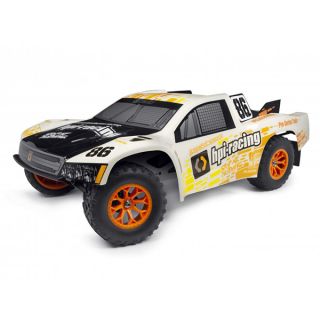
Puzzles can be a great choice for puzzle lovers who love to solve them. Sometimes, pieces are designed to look like particular aspects of architecture. While some puzzles in architecture are simple to solve, others can be more difficult. These types of puzzles are a great way to learn more about architecture. These are just a few examples.
Frank Lloyd Wright's architecture puzzles
Frank Lloyd Wright is considered one of the greatest architects of 20th-century history. His innovations in architecture are a result of his pioneering work. His talents extended far beyond architecture and furniture design to art glass, textiles, and textiles. One of the many architecture puzzles featured in this series features Fallingwater. This is Wright's modern home. This puzzle is 500 pieces and features an image of Wright's modern home on one side, and an aerial blueprint of the building the other.
Wright's most prominent work is the Guggenheim Museum. This museum was completed in 1959. Its famous geometric design is highly respected. Guggenheim Double Sided 500 Puzzle has two versions. On the one side of this puzzle, you will see the museum as it is today. On the other, you will find the original blueprint.

Galison double-sided jigsaws
Galison's double-sided architecture collections are the perfect way to bring art into the home and into the hands of children. In the Fallingwater Collection, they combined a picture showing the exterior of the home and an aerial map of its grounds. The finished products measure 24x18 inches and are packed in sturdy storage cases.
There are many types to choose from when it comes to jigsaw puzzles. You can find 500-piece puzzles which will test your patience as well as puzzles made with transparent pieces. You can also get double-sided puzzles to get more bang for your buck. Galison's double-sided puzzles on architecture feature photos of famous structures and buildings from the 20th century.
Frank Lloyd Wright's saguaro shapes
Frank Lloyd Wright's Saguaros puzzles are a must-have if you love them. These puzzles are art deco in style and include a lot of detail. These puzzles are also great collectibles. Frank Lloyd Wright puzzles include the Saguaro Forms 1000 Piece Jigsaw Puzzle. It is a modernized version the same design that appeared on Liberty magazine's cover, 1927. This jigsaw puzzle is made from quality materials and comes in a hinged metal box.
This Greeting Card Puzzle, featuring Frank Lloyd Wright’s saguaros saguaros, makes a great gift. The puzzle includes an envelope and card, which you can use to write a personal message. The card is also printed on the back and includes a full-color sticker seal.

Fallingwater 500-piece double-sided puzzle
This Frank Lloyd Wright puzzle contains an aerial photo and a photograph of the exterior of Fallingwater's home. The pieces have a mix of glossy and matte surfaces which makes it easy to divide the puzzle into sections. The history sheet is also included. If you're a fan of Wright's work, you'll enjoy this puzzle.
The Fallingwater puzzle includes a picture of the exterior of the home as well as an aerial plan of the grounds. This is a double-sided puzzle that measures about 24 x 18 inches. The puzzle includes a photograph of Fallingwater and an insert with information about Frank Lloyd Wright. The puzzle is packaged in a sturdy storage container measuring 11.5" x 8.5" x 2. The box also includes facts about Wright and his life.
FAQ
What are observation hobbies?
Observation hobbies are activities where you observe people doing what they do. It could be reading, watching sports or going on holiday. You could also observe other people.
It's great to have observation hobbies because it helps you think creatively. You can apply this knowledge later on when you work with others.
You'll find that if you're interested in something, then you'll have an easier time learning about it.
If you're interested in football, for instance, you could watch it or read a book. Exhibitions are a great way to learn about photography.
You can play along with songs online or purchase a guitar if you love music.
If you like cooking, you could cook your own meals or visit restaurants.
If you love gardening, you might grow vegetables or flowers.
If dancing is something you enjoy, join a dance class.
You could also paint pictures if you are a fan of painting.
Writing poetry or stories is a passion if you are a writer.
You might enjoy drawing pictures, if you are a good artist.
If you are passionate about animals, you can look after them or work at the zoo.
You could choose to study biology, maths, chemistry, or physics if you are interested in science.
You can read books, listen to podcasts, or watch films if history interests you.
If you enjoy traveling, you can travel around the world or just explore your own area.
What are the chances of making money with my hobby?
You can have many hobbies that lead to extra income.
If you are passionate enough about your hobby to decide to sell it,
A website might be a good idea if your hobby is collecting stamps.
This will allow you to earn additional income without having go through the hassles of buying and selling stamps.
Another option is to start a YouTube channel in which you discuss your hobby.
This allows you to share what is important to you with others, and possibly generate additional revenue through premium content.
What are some competitive hobbies?
You can compete in running, swimming or cycling as well golfing or tennis.
These games are often played by people who enjoy exercise but also offer the opportunity to interact with others.
If your hobby involves physical activity, you will likely find other people who share it.
This could include joining a club/group that allows you to play sports together regularly.
You may also want to play in a team game, where you are playing with others.
These include: football (soccer), soccer, cricket, netball.
There are many different types of competition.
Some competitions exist solely for recreational purposes.
Others are designed for competitors to prove their skill.
Some are even designed to reward outstanding performance.
In these cases, winners receive prizes.
Other competitions are designed to test the strength and stamina of competitors.
These are called endurance events.
For example, marathon races, triathlons, Ironman Triathlon, etc.
Before competing in these events, athletes train hard.
They will adhere to a strict training program that prepares them mentally as well as physically.
They may need to spend some time out of their home for preparation.
It's important to remember that not all athletes compete in every type of event.
How do I find a hobby that interests me?
It can feel overwhelming to start your search for a hobby when you first begin.
You're likely thinking, "I can't be very artistic" or "I have no idea what I'm doing."
But the truth is, you probably already have a lot of experience to draw upon when looking for a hobby.
It's just not something you're aware of.
Take a look at the contents of your home. What amount of stuff do you have?
Do you still have toys?
Perhaps you have a collection.
Perhaps cooking has been something you've wanted to do all your life.
Perhaps you just want to pick up the guitar again.
Whatever your hobby, it's possible to make it a hobby.
The key is to realize that you already have plenty of experiences to draw upon.
Once you have done that, you will be able choose a hobby that suits your lifestyle.
What is a collection hobby?
Books, movies music, comics and video games are some of the most popular collections.
You can also find stamps, coins, cars and dolls as well model kits and figurines.
I believe you get the idea.
Why do we need hobbies
Hobbies play an integral part in our lives. It allows us to unwind and recharge, think creatively, exercise, socialize, have fun, and allow us to enjoy life. You can also learn new skills and develop lifelong interests.
Hobbies can help us find meaning and purpose.
They are great for spending your free time when there's not much else.
And they're fun!
If you don't find time for hobbies, it's likely that you don't have enough time for any other activities.
Look at all the options. Maybe you should consider starting a hobby.
Statistics
- Studies show that just six minutes of reading can reduce stress levels by 60 percent. (oberlo.com)
- This 100% accurate personality-analyzing hobby quiz discovers your passion based on your characteristics. (quizexpo.com)
- In comparison, men in the “no humor” condition were refused 84.6% of the time and were only accepted 15.4% of the time. (time.com)
- The intensity of the dialogue partners' bond at the end of the forty-five-minute vulnerability interaction was rated as closer than the closest relationship in the lives of 30 percent of similar students. (time.com)
- A new survey by Pew Research Center of teens ages 13 to 17 finds that 36% of girls feel tense or nervous about their day every day; 23% of boys say the same. (pewresearch.org)
External Links
How To
How to begin gardening
Gardening is one the oldest forms. It requires patience, persistence, and determination. You must choose a suitable location to start your garden. You can choose to have a large area or a small one in your backyard. Next, choose what kind of plants you would like to grow. Do you prefer flowers over vegetables? Some people love to grow herbs, while others enjoy raising animals like rabbits. Before you decide on the type of crops you want to plant, it is important to consider the space available. You might consider growing berries or fruits if you live in a cold climate.
Once you have chosen what you will be planting, you must take some time to prepare your soil. Your plants' success or failure will depend on the soil they are placed in. The soil should be rich in organic matter to provide nutrients for your plants' roots. Organic matter includes organic matter such as leaves, twigs or grass clippings. You need nutrients to your soil after you have prepared it. You might need different amounts, depending on the species of plants that you want to grow. To determine these values, you can use a fertilizer calculator online. There are many fertilizers available so be sure to know what you are purchasing.
After you have prepared your soil, and added the correct nutrients, you will need to wait until your seed germinates. The process can take between 2 and 3 months depending on how hot or cold it is in your region. Once your seeds are sprouted, you must water them regularly. Too much or too little water can cause problems. Avoid overwatering your plants. Overwatering can result in root rot, fungal diseases, and even death. Keep in mind that plants are more thirsty during summer than winter. Some plants must be dried out after being watered. For example tomatoes should be kept slightly moist and not wet. They won't tolerate soggy soil. After the plants have finished flowering they must go dormant. Dormancy is when plants stop producing new growth and begin storing energy for the next season's harvest. Dormancy is when the plant stops sending signals back to its roots for food production. Plants continue to store energy throughout this period. If temperatures fall below freezing or the plants are not getting enough sunlight, they will die.
If you live in an urban environment, you may find yourself limited in the kinds of plants that you can grow. Concrete sidewalks, roads and buildings are common in urban areas. They block sunlight from reaching the ground. Concrete absorbs light, preventing the soil underneath from getting adequate sun exposure. This is why many plants cannot thrive in cities. There are still plants that thrive in urban environments. Many perennials, trees, and shrubs are able to adapt to urban living. Many annuals are also possible to grow indoors in containers. You can have fresh greenery all year round with container gardens.
You are now ready for planting!